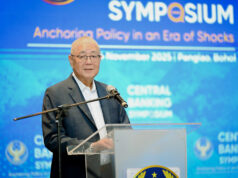FDI inflows expected to yield long-term economic benefits
THE RECENT SURGE in foreign direct investments (FDI) should help fuel merchandise export growth “two or three years from now,” providing added impetus for overall economic expansion to pick up, the chief of the Bangko Sentral ng Pilipinas (BSP) said.
“[C]ertainly, the increase in FDI is a very desirable outcome of policy and that reflects the positive view of investors. That’s another reason why the Philippines is resilient: we’re not as dependent on hot money flows,” BSP Governor Nestor A. Espenilla, Jr. told reporters at the central bank headquarters in Manila. “Now, we’re attracting more cold money or FDI.”
Foreign investments more than doubled in May to $1.645 billion, bringing five-month flows to $4.847 billion, according to latest central bank data. As of May, the central bank expected FDIs to reach $9 billion this year, lower than the record-high $10.049 billion recorded in 2017.
“… [I]f these FDI expand the manufacturing base — and they include exports-based (enterprises) — this will translate into export growth down the road; not this year, perhaps not even next year, but perhaps two or three years from now.”
Mr. Espenilla said the BSP will review its economic projections in October.
Guian Angelo S. Dumalagan, market economist at Land Bank of the Philippines, said “[d]ata from the start of the year suggest that 2018 will be a great year for foreign direct investments” even as “a risk factor might be the recent slowdown of the Philippine economy due to inflation concerns.”
Economic growth eased to six percent last quarter from January-March’s 6.6%, taking last semester’s pace to 6.3% against the government’s 7-8% full-year target for 2018. — Melissa Luz T. Lopez



